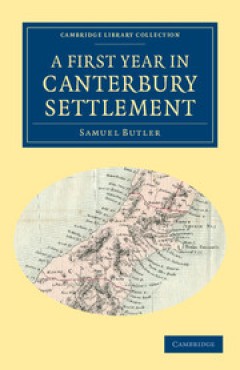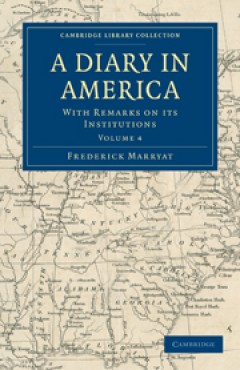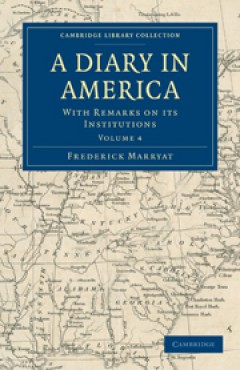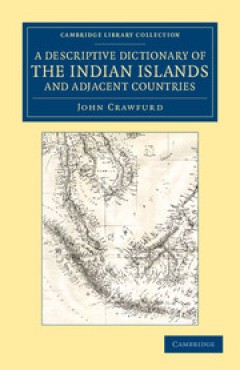Filter by

A Geographical and Commercial View of Northern Central Africa
James MacQueen (1778–1870) was a British geographer fascinated by the problem of the River Niger. He set out to try to establish (on the basis of accounts by explorers, traders and missionaries), that one and the same river flowed continuously through Africa and into the Atlantic Ocean, thus challenging long-established beliefs that African rivers either disappeared into the sand or terminate…
- Edition
- -
- ISBN/ISSN
- 9781139034579
- Collation
- -
- Series Title
- Cambridge Library Collection - African Studies
- Call Number
- -

A First Year in Canterbury Settlement
Samuel Butler (1835–1902) became famous with his satirical Utopian novel Erewhon, based on his experiences as a sheep farmer in New Zealand and published, initially anonymously, in 1872. This earlier book, published in London in 1863 while he was still abroad, is a compilation of his letters home. Having obtained a degree in Classics from Cambridge, Butler had left England in 1859 with genero…
- Edition
- -
- ISBN/ISSN
- 9781139108218
- Collation
- -
- Series Title
- Cambridge Library Collection - History of Oceania
- Call Number
- -

A Directory for the Navigation of the Pacific Ocean, with Descriptions of its…
The English geographer and hydrographer Alexander George Findlay (1812–75) had observed that navigators of his time had to consult a considerable number of documents to gather the information they needed to sail the Pacific Ocean safely. Not only was this highly impractical, it also exposed seafarers to conflicting information that could lead to their demise. First published in 1851, this two…
- Edition
- -
- ISBN/ISSN
- 9781139583114
- Collation
- -
- Series Title
- Cambridge Library Collection - Maritime Exploration
- Call Number
- -

Fish, Fishing and Community in North Korea and Neighbours Vibrant Matter(s)
This open access book explores the histories and geographies of fishing in North Korea and the surrounding nations. With the ideological and environmental history of North Korea in mind, the book examines the complex interactions between local communities, fish themselves, wider ecosystems and the politics of Pyongyang through the lens of critical geography, fisheries statistics and management …
- Edition
- -
- ISBN/ISSN
- -
- Collation
- -
- Series Title
- -
- Call Number
- -

A Diary in America With Remarks on its Institutions
Captain Frederick Marryat (1792–1848) was a distinguished naval officer, today best remembered as a novelist (particularly of stories for children), often drawing on his own experiences. He also edited a radical journal, and wrote non-fiction, including an attack on press-gangs, which damaged his career. He spent 1837 and 1838 travelling in North America, publishing his impressions in this un…
- Edition
- -
- ISBN/ISSN
- 9781139058704
- Collation
- -
- Series Title
- Cambridge Library Collection - North American History
- Call Number
- -

A Diary in America With Remarks on its Institutions
Captain Frederick Marryat (1792–1848) was a distinguished naval officer, today best remembered as a novelist (particularly of stories for children), often drawing on his own experiences. He also edited a radical journal, and wrote non-fiction, including an attack on press-gangs, which damaged his career. He spent 1837 and 1838 travelling in North America, publishing his impressions in this un…
- Edition
- -
- ISBN/ISSN
- 9781139058711
- Collation
- -
- Series Title
- Cambridge Library Collection - North American History
- Call Number
- -

A Diary in America With Remarks on its Institutions
Captain Frederick Marryat (1792–1848) was a distinguished naval officer, today best remembered as a novelist (particularly of stories for children), often drawing on his own experiences. He also edited a radical journal, and wrote non-fiction, including an attack on press-gangs, which damaged his career. He spent 1837 and 1838 travelling in North America, publishing his impressions in this un…
- Edition
- -
- ISBN/ISSN
- 9781139058728
- Collation
- -
- Series Title
- Cambridge Library Collection - North American History
- Call Number
- -

A Descriptive Dictionary of the Indian Islands and Adjacent Countries
Orientalist and colonial administrator John Crawfurd (1783–1868) published this work in 1856. He went to Calcutta as an assistant surgeon in the East India Company, then moved into administration, accompanying political missions to Java, Bali and Celebes, and heading missions to Siam, Vietnam and Burma. Retiring to England in 1828, Crawfurd became a Fellow of the Royal Society and President o…
- Edition
- -
- ISBN/ISSN
- 9781139199070
- Collation
- -
- Series Title
- Cambridge Library Collection - Travel and Exploration in Asia
- Call Number
- -

A Chronological History of North-Eastern Voyages of Discovery: And of the Ear…
Rear-Admiral James Burney (1750–1821), brother of the novelist Fanny Burney and son of the musicologist Dr Charles Burney, is best known for his five-volume compilation of voyages in the Pacific Ocean (also reissued in this series). He began his maritime career at the age of ten, as a captain's servant. Five years later he became a naval officer, and from 1772 to 1780 served on Cook's second …
- Edition
- -
- ISBN/ISSN
- 9781139177566
- Collation
- -
- Series Title
- -
- Call Number
- -

A Brief Narrative of an Unsuccessful Attempt to Reach Repulse Bay: Through Si…
This short work, featuring a number of attractive engravings, traces an abortive expedition to the Canadian Arctic. George Francis Lyon (1795–1832), naval officer and explorer, had accompanied William Parry on a previous expedition in search of the North-West Passage. In 1824 Lyon was instructed to return to Repulse Bay and to explore the mainland. Unfavourable weather conditions forced Lyon …
- Edition
- -
- ISBN/ISSN
- 9781107281202
- Collation
- -
- Series Title
- -
- Call Number
- -
 Computer Science, Information & General Works
Computer Science, Information & General Works  Philosophy & Psychology
Philosophy & Psychology  Religion
Religion  Social Sciences
Social Sciences  Language
Language  Pure Science
Pure Science  Applied Sciences
Applied Sciences  Art & Recreation
Art & Recreation  Literature
Literature  History & Geography
History & Geography